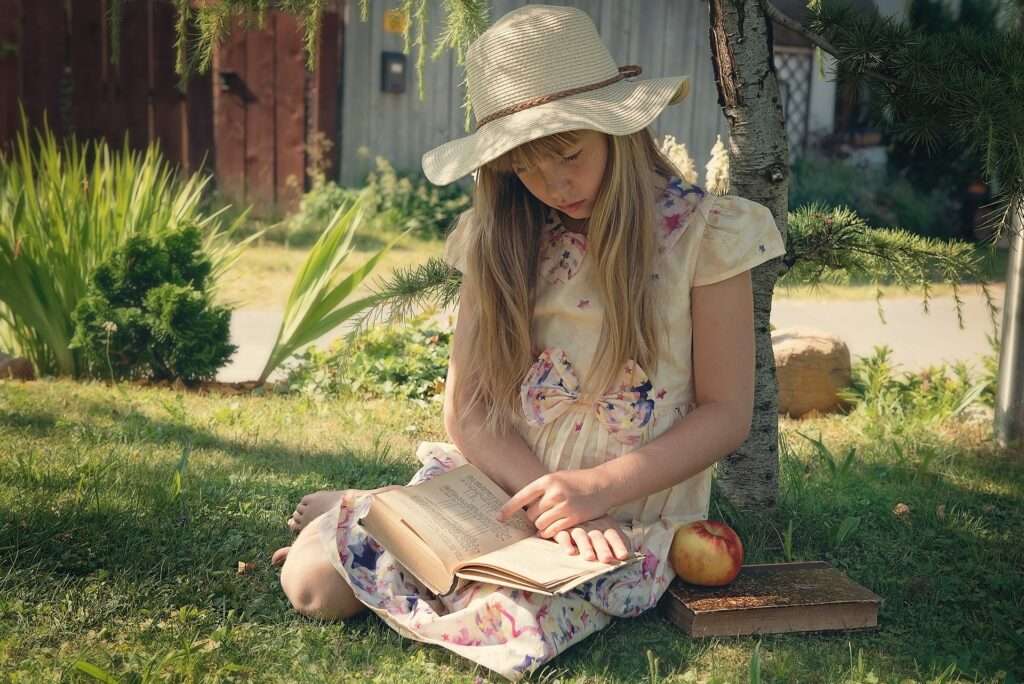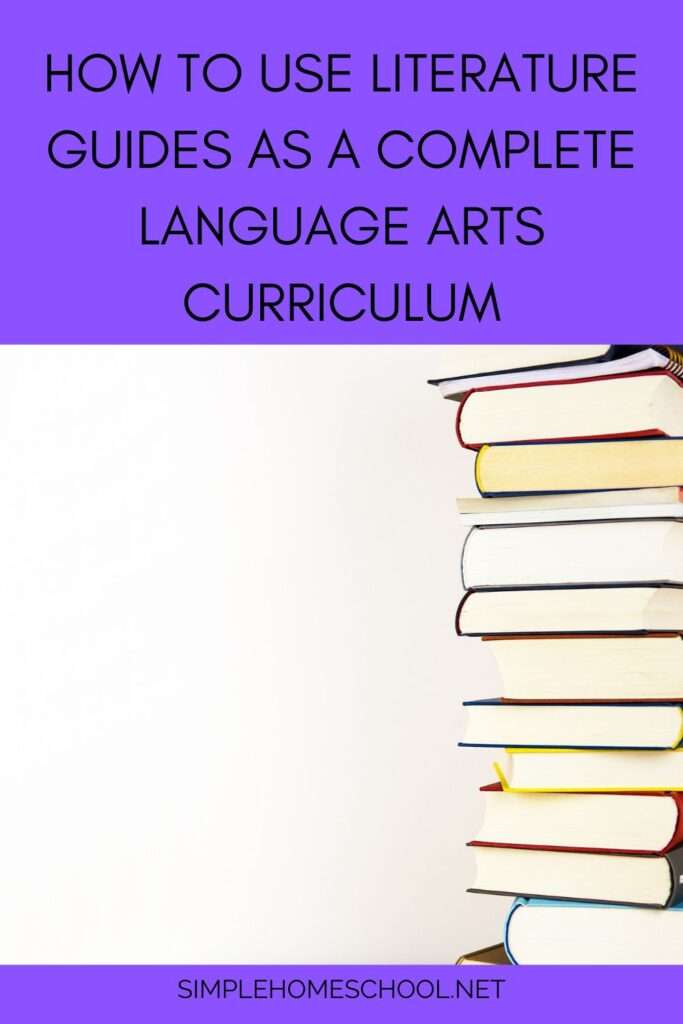How to Use Literature Guides as a Complete Language Arts Curriculum ~
Written by Kari Patterson
As a mama with very different kids, including one on the spectrum, we have tried a little bit of everything, curriculum-wise. Over the last 11 years we’ve done Saxon, Singapore, Life of Fred, Bob Jones, and HSLDA math. (Whew!) Each was helpful for the particular child and stage he or she was in at the time.
We’ve also dabbled in various history and science curriculums, but there has been one fairly common thread through the whole course of our homeschool journey:
Teaching language arts through literature guides.
This isn’t a certain curriculum (I use several) so much as an approach. If this interests you, follow along: I’d love to share how this has worked for us.
How to Use Literature Guides as a Complete Language Arts Curriculum
Why Literature Guides?
Humans love stories. Doesn’t everyone love stories? Who doesn’t love getting swept up in a truly captivating tale, who isn’t moved or challenged or inspired by the heroism and humanity we meet, whether on the page or the screen?
My mom always espoused the Delight Directed philosophy of learning. She believed that if we can discover what delights our children, we’ll find the key to helping them learn. As far as I can tell, everyone delights in a well-told story.
Time together. While our kids do a lot of reading on their own, we’ve always done our literature guides together. In the youngest years, I read the books aloud, snuggled on the couch, and we did all the writing work together.
Now at 16 and 14 years old, they do all that work on their own, but we read the books at the same time and discuss as we go.
I have found that reading literature together has allowed my kids and I to enter into fascinating worlds together. While the rest of life is going on, we are also elsewhere. We are in Narnia or Avonlea, Pemberley or the Shire.
Just the other day I walked in to Dutch’s room and he was laughing to himself: “Marie St. Clare is the WORST!” I knew exactly where he was.
I love sharing a literary world with my kids.

How?
Of course there are any number of ways to do this, but I’ll share what it’s looked like for us.
Getting Started: I’ve primarily used Total Language Plus and Progeny Press study guides.
(Side note: I now teach middle/high school literature at a homeschool co-op and the Progeny guides are nice because the pages are reproducible for use within one classroom. You can also buy them as e-guides and just print off what pages you need.)
Pace: As a general rule, you can usually cover 3-4 literature guides a year, depending upon the book. (We’ve done 4 each year.) My favorite way to plan is simply peruse grade-level book lists from sources I trust, and see which ones coincide with literature guides.
I start with ones I’ve read and love, and for those I’m not familiar with, I check them out from the library to read over the summer.
Pick and choose: I don’t use every activity in each guide. I’m not a fan of word-scrambles or crossword puzzles for vocabulary study, though some of you might love those! I prefer students write creative sentences or paragraphs using vocabulary words.
Discussion: In my opinion, the discussion is the most valuable part. We go through every chapter together, discussing what struck us, what confused us, what we loved or didn’t love. We discuss the analysis questions, we discuss implications and underlying assumptions.
This also helps students’ comprehension, if the book is particularly challenging. Many weeks I’ll have students confess they were very confused by the narrative or dialogue, but after a thorough discussion they understood more clearly.
Grammar/Writing: Just this year I began incorporating the IEW Structure & Style concepts into our literature studies. I wish I’d started years ago! We’ve always done the grammar and writing activities included in the literature guides, but this year I took Andrew Pudewa’s teaching practicum and purchased the teacher and student notebooks and incorporated the concepts and assignments each week.
This has been a fabulous combination!
Lastly, I can’t help but share some of our very favorite literature studies over the years:
The Whipping Boy, Charlotte’s Web, The Witch of Blackbird Pond, My Side of the Mountain, The Wheel on the School, The Hiding Place, Anne of Green Gables, The Giver, To Kill a Mockingbird, The Scarlet Pimpernel, Uncle Tom’s Cabin, and Pride & Prejudice.
Whether you have or have not used literature guides for language arts, I hope this encourages you to try something new!
Are you a GOOD or BAD homeschool mom? Take Jamie’s NEW QUIZ now to find out!



 SH #107: What Makes a GOOD or BAD Homeschool Mom?
SH #107: What Makes a GOOD or BAD Homeschool Mom?
Just wanted to add many children’s authors — me included! — either create their own literature guides or hire someone to write them. Visit author or publisher websites to find a variety of examples to enhance your family’s reading experience.
Can you do these with multiple grade levels at the same time, or would I need to do a separate guide with each of my kids? (I have 3rd, 5th and 8th graders)
This is a timely idea for me. Thank you! I just found IEW last year and I am approaching using it more like incorporating into what we are doing rather than using one of their curriculum books now because the book approach wasn’t quite working.
I think this is going to be another good piece of the puzzle for us!
I would like to hear more about how you combined IEW Structure & Style with the literature units. You said you always did the grammar and writing activities included in the literature studies. Are you now doing the activities from IEW instead?